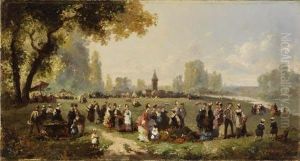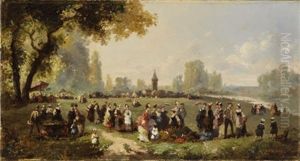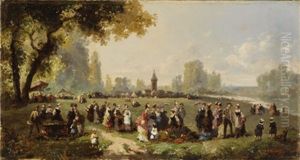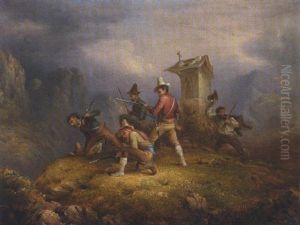Pierre Theodore Colson Paintings
Pierre Théodore Colson was a French academic painter who was born on October 8, 1824, in Oisemont, France. Colson is known for his classical style of painting that adhered to the academic standards of his time. His artistic journey began under the guidance of François-Édouard Picot, an established painter who was known for his mythological and historical works. Colson continued his studies at the École des Beaux-Arts in Paris, which was the hub of artistic training in France during the 19th century.
Throughout his career, Colson received recognition and accolades for his work. In particular, he was awarded medals at the Paris Salon, an official art exhibition of the Académie des Beaux-Arts in Paris, which was the most prestigious art event in the Western world at the time. His paintings often depicted historical scenes, portraits, and religious subjects, reflecting the popular tastes of the period.
Colson's adherence to the academic style meant that his work was characterized by its highly finished technique, precise draftsmanship, and a clear narrative structure. He painted with a keen attention to detail and a respect for the canons of beauty and harmony established by the tradition of the French Academy. His works, like those of his peers, sought to convey moral and didactic messages, which were considered important functions of art during his time.
Despite his adherence to academic norms, Colson's work was not immune to criticism. The latter half of the 19th century saw a growing movement of artists who rebelled against the strictures of academic art, leading to the development of new styles such as Impressionism. As a result, academic artists like Colson faced increasing challenges to their traditional methods and subjects. Nonetheless, Colson maintained a successful career and continued to contribute to the Salon until the end of his life.
Pierre Théodore Colson passed away on April 3, 1896, in Paris. While he may not be as widely remembered as some of his contemporaries, his work provides valuable insight into the academic art traditions of the 19th century and reflects the cultural and aesthetic values of his time. Today, his paintings can be found in museums and private collections, serving as a testament to the enduring skills of academic painters during the height of their influence.



